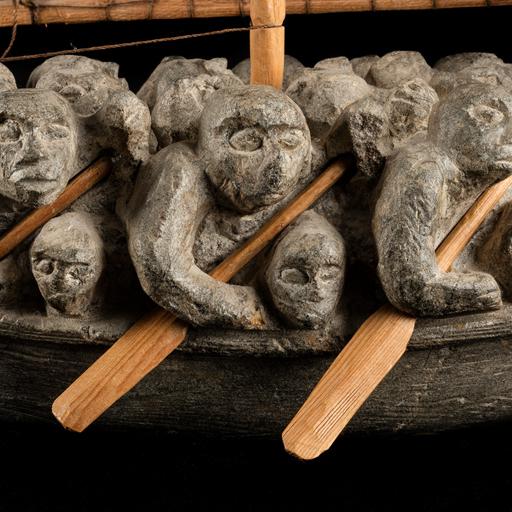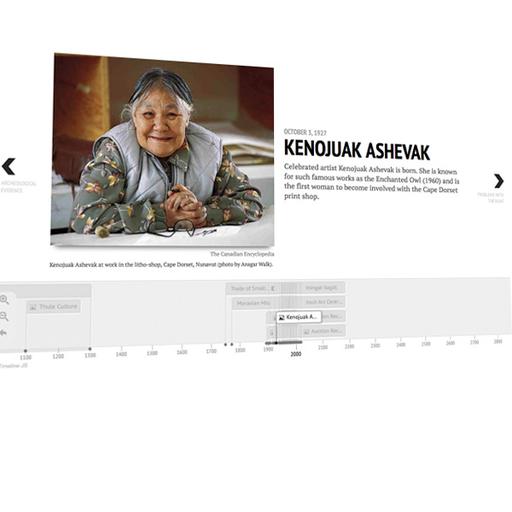Karoo Ashevak, ᑲᕈ ᐊᓴᕙ
SPIRIT
Karoo Ashevak ᑲᕈ ᐊᓴᕙ (1940-1974), Taloyoak (Spence Bay) SPIRIT, CA. 1971 whalebone, stone, ivory , signed in syllabics 7.5 x 6.5 x 6.25 in — 19.1 x 16.5 x 15.9 cm Provenance: Private Collection, British Columbia Note: With their ingenuity and unique vision, Karoo’s sculptures continue to intrigue generation after generation of collectors with their mix of imagination and humour. Karoo’s preferred medium was whalebone due to the wonderfully abstract and curvilinear shapes of the bones in their unaltered state. These forms lent themselves to Karoo’s visions of the spirit world. Per Pamela Harris, “his approach to his work is unlike that of most Eskimo carvers, who believe that the form of the finished carving already exists within any piece of stone or bone and who consider that the carver's work is to free that form from the material that has kept it confined. Ashevak always begins his carvings with an idea in mind and then choses material of appropriate sizes and shapes. It is with the grotesque and wonderful pieces of whalebone that his genius has exploded.” (1) Karoo had a wealth of material to work from, leftovers from generations of hunters dating as far back as 1000 C.E. The bones presented a complex range of textures from delicate to rock-hard for the artist to negotiate. Karoo was extraordinarily technically proficient, and was able to exploit the medium to suit his purposes. He worked the whalebone using simple tools: a carpenter's saw, files, and a drill. Karoo especially loved working with a drill, and would use it to hollow out nostrils in many of his most signature creations, as evidenced in both Karoo sculptures in this auction, lots 136 and 168. In lot 168, the influence of Western Arctic masks can be seen. Some historic secular masks displayed distorted and irregular features, either in parody or for amusement. Karoo’s sense of humour is often mentioned in scholarship about his works, and is in full evidence here. Jean Blodgett notes that any distortion of human or animal features were understood by Inuit viewers as representative of the spirit realm: “Although exaggerated features were used on the masks for their comic effect, distortion was also utilised for the depiction of the supernatural. Masks with greatly distorted features - to the point of abstraction - were usually of mythological beings such as dwarfs, giants or those non-human beings who lived together in certain places.” (2) This particular sculpture, a quintessential example of the artist’s oeuvre, is fresh to market. For the second Spirit sculpture by the artist in this auction, please see lot 136. (1) Pamela Harris, Karoo Ashevak Spirits (New York: American Indian Arts Center, 1973), unpaged. (2) Jean Blodgett, Karoo Ashevak: Winnipeg Art Gallery, March 30 to June 5, 1977 (Winnipeg: The Winnipeg Art Gallery, 1977), unpaged. Many countries prohibit or restrict importation or exportation of property containing ivory, whale bone, sealskin, and/or products derived from other endangered or protected species, and require special licenses or permits in order to import or export such property. It is the responsibility of the buyer to ensure that the item is properly and lawfully exported / imported. Please do not hesitate to contact one of our specialists for further details. Estimate: $7,000—9,000
Auction Results
| Auction Date | Auction House | Lot # | Low Est | High Est | Sold Price |
|---|---|---|---|---|---|
| 2024-05-29 | Waddington's | 168 | 7,000 | 9,000 | 6,250.00 |
| 2012-04-30 | Waddington's | 233 | 6,000 | 9,000 | 4,000.00 |
| 2010-04-19 | Waddington's | 197A | 8,000 | 12,000 | 9,600.00 |
| 2008-04-14 | Waddington's | 118 | 20,000 | 25,000 | 43,200.00 |


